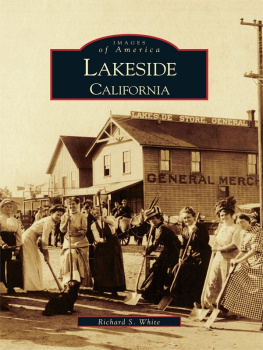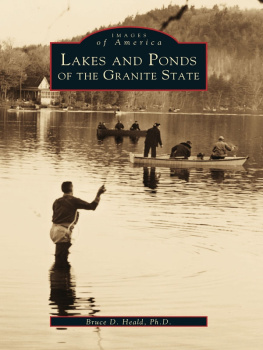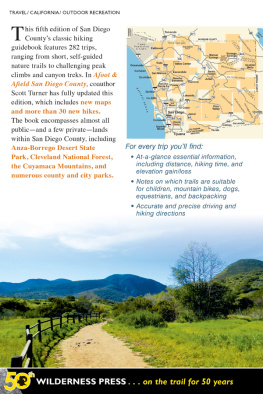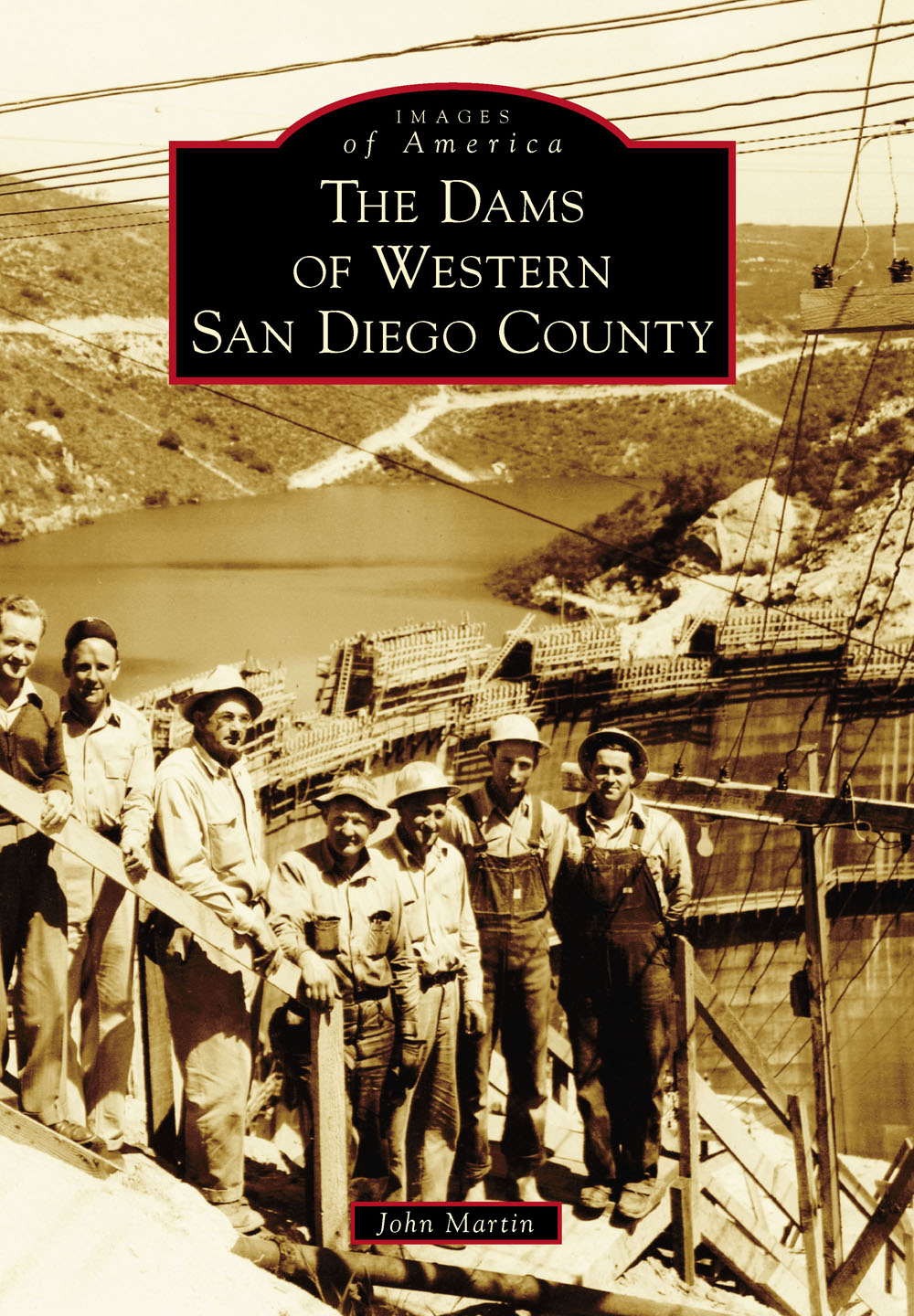
IMAGES
of America
THE DAMS
OF WESTERN
SAN DIEGO COUNTY
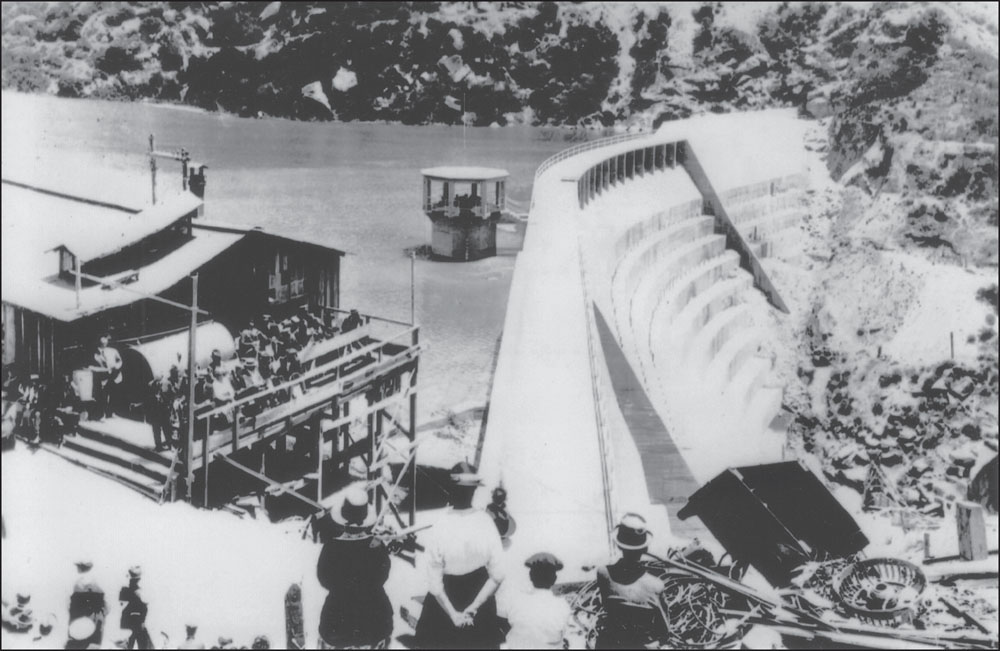
Hundreds of San Diegans braved the hot, dusty 35-mile trip to Barrett Dam to celebrate its dedication on July 25, 1922. The heavy spring rains that had interfered with construction had now almost filled the reservoir. (Courtesy of San Diego City Library, California Room Collection.)
ON THE COVER: A foreman and a crew of workers pose on temporary steps leading down to the Loveland Dam construction site in 1945. The completed lower portion of the concrete dam has started to conserve the Sweetwater River and form the long, narrow Loveland Reservoir. (Courtesy of Bonita Museum and Cultural Center.)
IMAGES
of America
THE DAMS
OF WESTERN
SAN DIEGO COUNTY
John Martin

Copyright 2017 by John Martin
ISBN 978-1-4671-2721-9
Ebook ISBN 9781439663400
Published by Arcadia Publishing
Charleston, South Carolina
Library of Congress Control Number: 2017937002
For all general information, please contact Arcadia Publishing:
Telephone 843-853-2070
Fax 843-853-0044
E-mail
For customer service and orders:
Toll-Free 1-888-313-2665
Visit us on the Internet at www.arcadiapublishing.com
To Patrick for trekking sagebrush hillsides and for technical advice, to Eliza for dispensing knowledge, and to Jane for moral support and tolerating it all.
CONTENTS
ACKNOWLEDGMENTS
I am indebted to many people for their assistance. Thanks to my friend Jeff Pasek for allowing me access to the City of San Diego Water History Archive Collection (hereinafter cited as SDCWHA) that he has assembled, and for trekking to the dams in the city system. Thanks to Rick Crawford and Derrick Moses for hauling out all the Feature Histories in the San Diego City Library California Room Collection (SDCL). Thanks to Michelle Peralta and Aspen Hill at the Pioneer Room in the Escondido Library and the folks at the Carlsbad City Library; Don Smith and Jessica Sherwood at the Vista Irrigation District; Diana and Shawn Kelly at the Bonita Museum and Cultural Center; Ted Solia at Helix; Gwyneth Shoecraft of Sweetwater Authority; Jessica Parks at Santa Fe Irrigation; Robert Bergquist in Fairbanks Ranch; Mike Lee at the San Diego County Water Authority; Richard Williamson at the Carlsbad Water District; Gary Arant, Greg Hoyle, and Tony Lo Presto at the Valley Center Water District; Lesley Yeager at the San Dieguito Water District; Coleen Garcia, Laural McPhee, and Heather Smedberg in University of California San Diego (UCSD) Special Collections; Caroline Anderson of Arcadia for her patience; and the many unnamed dam enthusiasts along the way for their support.
INTRODUCTION
Regional climatic conditions determined that water in San Diego County was forever a dilemma. That dilemma became more pronounced as the municipal aspirations of the small town blossomed in the late 19th century. By necessity, San Diego water advocates assumed what Dr. Eliza Martin called the growth by the gallon mentality, as San Diegos city leaders pondered how best to reconcile the towns future with the water resources available. Rival Los Angeles was able to develop the Owens Valley as a water source, but San Diego had no similar alternative. To sustain a reliable water supply throughout both plentiful and drought periods, San Diego depended on the ability to collect water when it was available and store it in dammed reservoirs. The variable seasonal flow, unpredictability of the countys rivers, uneven seasonal rainfall, and cyclical droughts coupled with the regions topographic landscape determine that large-scale water storage facilities were required to systematically utilize the catchments on the countys river systems.
Private and municipal entities developed six of the seven river systems in western San Diego County. The rivers originated in the eastern interior mountains and flowed westerly through valleys that first featured steep-sided, then chaparral brush covered slopes, before they entered the tidal basins along the Pacific Coast. From north to south, the rivers were the Santa Margarita, the San Luis Rey, the San Dieguito, the San Diego, the Sweetwater, the Otay, and the Tijuana. These rivers encompassed the Hodges, Sutherland, El Capitan, San Vincente, Murray, Otay, and Cottonwood catchments, contained 24 significant dammed reservoirs, and provided the county with a combined capacity of 746,000 acre-feet of water.
The proliferation of dams on these watercourses was the regions attempt to engineer its way out of its water dilemma and attain sustainability. Private water companies constructed the first important dams. The Southern California Mountain Water Company constructed the Lower Otay Dam, the Kimball Brothers built the original Sweetwater Dam, and the San Diego Flume Company and its successor the Cuyamaca Water Company built the diverting dam on the San Diego River, Eucalyptus Dam, La Mesa Dam, and Murray Dam. In the north county, the Santa Fe Railroad and San Dieguito Mutual Water Company created Hodges and San Dieguito Dams, while the Volcan Water Company and the San Diego County Water Company built Henshaw Dam. The City of San Diego developed its independent water system through the purchase of existing private dams and then the construction of Morena and Barrett Dams in 1912 and 1923, respectively.
Dam construction in the county has continued into the 21st century, but the true golden era was between 1888 and 1934, when the county became the international nexus for dam construction. During this time, the city and private enterprise constructed the majority of the countys massive dams. But the unrestrained population growth spurred by San Diegos war economy in the 1940s overwhelmed the countys ability to supply water to its citizens and prompted the necessity of claiming water from outside resources. With the introduction of the San Diego Aqueduct, the countys oldest and largest dammed reservoirs reverted to storage facilities for the city system.
There are 50-plus dams in San Diego County that serve as storage and flood control facilities, of which 40 are publicly owned and operated. None of these dams are power generating facilities. Despite the fact that the average age of the countys dams is over 60 years, in 2016, California state inspectors judged the major dams safe. Since the arrival of Colorado River water and water from the northern Delta, San Diego Countys dammed reservoirs provide 20 percent of the countys water needs and act as emergency supply facilities against the disruption of the flow from those sources.
The dams selected here are presented in chronological order to enhance the historical narrative. Many of the dams remain as integral functioning water facilities, while some only retain historical value. Civic, hydrologic, and agricultural factors determined that all these dams were located inside the western slopes of the interior mountains. Some of the monumental dams constructed between 1888 and 1934 have been heightened or had spillways reconstructed for safety concerns, but aside from the original Lower Otay Dam, which the flood of the 1916 destroyed, the dams largely stand as constructed. The county experienced a surge of construction from the 1950s through the 1980s, but given the climate of river restoration, there is little likelihood more will ever be built.
One
Next page



